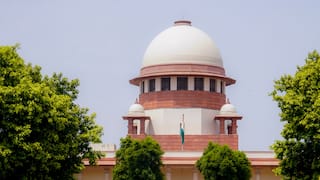Parliamentary Panel Proposes Permission For Worship At ASI Sites With 'Religious Significance'
The Ministry of Culture in its response to the observations of the panel has said that it has noted them for "exploring feasibility".

A parliamentary panel has recommended to the Centre to explore the possibility of permitting worship at ASI-protected monuments having "religious significance" if it can be established that this would not have a detrimental effect on their conservation.
The department-related Parliamentary Standing Committee on Transport, Tourism and Culture has said this in its 'Three Hundred Sixty Third Report on the Action Taken by the Government on the recommendations/observations of the Committee contained in its Three Hundred Twenty-Fourth Report' on 'Issues relating to Untraceable Monuments and Protection of Monuments in India', which was presented in both Houses on Friday.
"The Committee feels that several historical monuments across the country hold immense religious significance to a large number of people and allowing pujas/worship/ certain religious activities at such monuments can fulfil legitimate aspirations of the people," the panel said in its observations in the report.
"The Committee, therefore, recommends that ASI may explore the possibility of permitting pujas/worship/certain religious activities at historical Centrally Protected Monuments of religious significance, subject to the condition that it can be established that such activities would not have any detrimental effect on the state of conservation and preservation of the monument," it said.
The Ministry of Culture in its response to the observations of the panel has said that it has noted them for "exploring feasibility".
"In this regard, it is to submit that as per the policy decision revival of worship is not allowed where it was not in vogue at the time of protection or abandoned since long," the ministry has told the panel.
A senior official of the Archaeological Survey of India (ASI) said, according to the AMSAR (Ancient Monuments and Archaeological Sites and Remains) Act, if a site was not a religious one or any religious activity was not being carried out at the time ASI took it into its custody, then worshipping or any other religious activity cannot be allowed there.
However, if that was the norm at the time of its taking over by the ASI, such religious practices are permitted.
An example is the Taj Mahal, where Friday prayers are permitted as it was done when the ASI brought it under its ambit, sources said.
Lingaraja Temple in Odisha is maintained by the ASI and a temple trust, so puja is allowed there, as it has been conducted for a very long time. Worshipping is permitted at a temple in the Khajuraho temple complex also similarly, the sources said.
However, when ASI took over the ruins of the ancient Martand Sun Temple in Jammu and Kashmir, it was already in a state of ruins where worshipping had stopped long ago, and therefore, can't be permitted according to the existing norms, they said.
The department-related Parliamentary Standing Committee on Transport, Tourism and Culture in its report has also expressed a "deep concern and disappointment at this apparent lack of seriousness," on the part of the ministry in responding to the panel's recommendations addressing critical issues.
(This story is published as part of the auto-generated syndicate wire feed. Apart from the headline, no editing has been done in the copy by ABP Live.)
Top Headlines





































